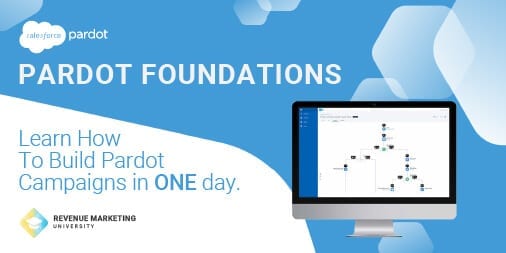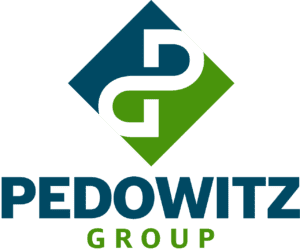Pardot is a powerful marketing automation platform that’s made a big splash in the MarTech world. No doubt you know that from all the research you’ve done before you made the leap and purchased the platform for your company.
But now, you’re faced with a (common) problem.
You have a beautiful new piece of technology that is going to give you the ability to engage, track and manage your customers and provide leads to Sales in near real time. How do you put it to use?
If you’re transitioning from another platform, you need to learn how what you’re doing in your current platform will translate to Pardot. Not everything is going to be the same. Let’s go over some Pardot best practices to will help you setup your system for long-term success.
Related: Did you know we offer a Pardot Basics online class covering many of these topics, and have a handy Pardot glossary to help you?
Governance
This is an important term you should know in marketing ops in regards to platform organization and data management.
Consider how you maintain control and accuracy of your data. It would be best to have a single point person that manages the overall governance.

- With evolving data privacy concerns, who’s in charge of addressing these?
- You should have a naming convention that is adopted and strictly followed. How will this naming convention be managed?
- Is there a standard operating procedure in place – and who enforces this if someone decides to go rogue?
- Who has final say on the people who have access to your Pardot instance?
Have this in writing and in a place anyone who needs it can access for reference. Ensure sign-off from all key stakeholders.
Organization of your instance
Something unique and special about Pardot is its folder and permission structure. You can tie permissions down to the folder lever (which is one of the reasons why governance is so critical!).
In Pardot, certain aspects of scoring and permissions are tied to folders. Therefore, the architecture of the folders is essential. Make sure each folder has a distinct purpose, is easy to find, and is in the right place. Unnecessary folders can really clutter up an instance!
Related: Nail your Pardot migration like a boss
Naming convention
The naming convention you use in Pardot as well as all your systems is of great significance. It must be consistent and reflective of the timeframe of the marketing initiative. It must also incorporate the channel(s) you use.
Ultimately, your naming convention is important because it is crucial to governance and reporting.
In order for this to work, it must be adopted by everyone who uses Pardot and Sales Cloud, if the two are integrated, so that there is consistency throughout the system. Have a shared document with established / approved naming as a guide, and make sure it is referenced in any enforcement mechanisms you have in place.
It also helps to include this document in any introductory info you give to new users! Speaking of…
Meeting Long-Term Goals
There should be a purpose to every action. Ask yourself: what is your goal?
Before you jump into the system – strategize. Build your system for the long term. And remember, it’s hard to undo mistakes. If you set up the platform as best you can up front, you’ll set yourself up for success. It will take more work in the short term, but it will be worth it in the long run.
Think about how business units will leverage Pardot – you have one primary tracker domain, but you can have multiple business units. It’s important to set it up correctly on the back end.
User management
You need to make sure the right people have the right access – and no more than what they actually need.
Like the old saying goes, with great power comes great responsibility. We suggest creating a matrix of various permissions and then using it to see what roles need which permissions. We strongly suggest that not everyone be given admin-level permissions.
Along with controlling what the Pardot users can see and do, you can also restrict any accidental sends and/or unnecessary exports of your data through the security limit settings.
Strategizing properly on how users are set up in Pardot is beneficial for everyone and will save many headaches in the future.
Testing
As with any marketing, you need to make sure you test … and frequently! What your readers enjoy changes over time, and you need to make sure you’re on top of any changes in their behavior + are always striving to provide the best experience possible.
Who’s your email “fact checker” … making sure you don’t miss a link, a typo, or anything in between?
Do different formats work for different segments?
Are you testing your emails on all formats … desktop, tablet, and mobile, using the render testing tool?
How’s your subject lines … and do you know what it looks like on mobile, when it’s often truncated and doesn’t quite deliver the impact as on desktop?
These are just a few items to consider, but there’s plenty more!
Reporting
Just as you gather data from your tests, you’ll also want to know key characteristics of those who are not just getting, but also opening your emails.
This is where the Email Client report comes in real handy.
It not only shows you what email clients (Gmail, Outlook, etc.) your target audience(s) are using, including what mobile devices are most popular.
When designing email templates, this information is crucial! Anything you build will need to “play nice” with these formats, so as you scale your Pardot marketing make sure you don’t forget to check this report regularly.
A checklist for getting started
Below are the technical steps to take first, with items to get your team ready for Pardot. New users will have issues right away if these steps are not complete. It’s so worth the time to invest here, because while it might not be the jumpstart on the first campaign your boss is asking for, these actions will save you time and optimize every campaign you ever build.
These are also the areas that cause trouble for clients who call us in to fix a Pardot implementation that’s not up to standard. When you can check off these items, you’re ready to move on!
- Set up responsive email templates.
- Set up responsive layout templates for landing pages and forms.
- Set up email and tracker domains.
- Make sure that your unsubscribe page and your preference pages are set up, and your layout templates are applied.
- Import your contacts and make sure you only upload those who’ve given specific permission to be contacted for marketing purposes. Pardot takes email blacklisting seriously and you don’t want to end up on one!
- Import your bounced list to ensure you’re complying with those contacts who opted out ofyour marketing.
- Work with your IT team to set up DNS records for your email and tracker domains.
- Enable the connector to sync Pardot with your CRM. (You will need help from your SFDC Admin to setup the connector, once setup then you can enable the sync).
Related: Email marketing best practices
Common Challenges
Here’s a few we commonly see for early-stage Pardot users.
Unclean Database
Every database needs some cleanup, but we’ve seen some horror stories – and hopefully yours isn’t one of them!
Tactically, you’ll need to block time to work through the data and clean up some of the issues. This might also involve identifying systems that are integrated and are causing problems, so make sure you have the buy-in from everyone so you can stay focused.
Strategically, work with sales to agree on how to keep data clean, with clear accountability on who is responsible for keeping it clean. You can support this with the creation of dashboards in SFDC to monitor the database and understand which fields are populated and which are not.
There are several tools out there that connect to Salesforce.com that can help you monitor your database health. Remember, data management is an on-going process, not a one-time fix!
Pardot passes leads to sales, but we do not know if sales receives them or perceives them as high quality enough for prompt follow up.
To understand the life of a lead from Pardot to Salesforce.com, you need to review how Pardot’s lead lifecycle works. Here are the stages and how they are defined:
- Visitors: Anonymous visitors that have visited your website
- Prospects: Known contacts and anonymous visitors who converted to Prospects in Pardot
- Marketing Qualified (MQL): Prospects who have been assigned to a Pardot user
- Sales Qualified (SQL): Prospects who have a contact role on an opportunity
- Won Deals: Opportunities closed won with prospects associated as a contact role.
Sales and Marketing alignment is crucial here. Make sure you have a full understanding regarding the definitions of lead stages: define when a lead is still considered a prospect and not yet ready for sales. Have you sat in a room (or virtual conference room) and talked through it with Sales recently?
Then, define exactly when a prospect is regarded as sales-ready.
Once you fully comprehend the stages and the definitions, you can leverage the Engagement Studio and Salesforce Campaigns to customize that lifecycle experience for your own organization.
Syncing Pardot lists to Salesforce campaigns
Lucky for you, there’s a whole blog on the topic by Alex Taylor!
Conclusion
Considering these high-level overview points will give you a leg up as you get started in your Pardot instance. The most important thing to consider is the long term. Determine your goals first and strategize around them. Then you will be able to build an instance that is both highly useful and successful.
Need more? Drive greater engagement with our Pardot consulting services, and be sure to read these three under-used features!


